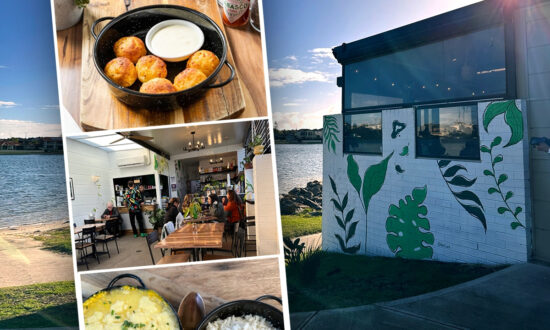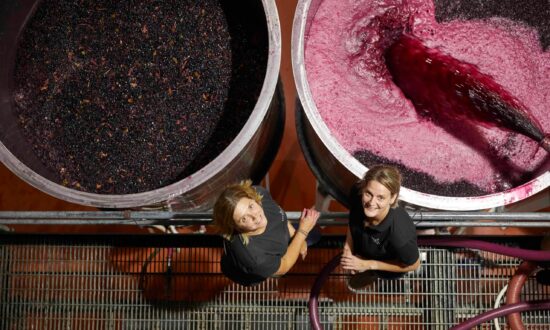As the traditional Sparkling and Champagne season slows down and life returns to whatever normality was for you before the summer holidays, you might be re-assessing what all that fizz was about.
Your pockets may be feeling a little lighter, like your head. Good bottles of bubbles are not deeds done dirt cheap.
And when all is said and done, which wine totally blew you away? Do you recall fondly that massive diversity of flavours and styles? Go on, really? At best we’re talking nuances in micro and nano measures. Finesse is arguably the real point of difference, and so it should be, often going hand in hand with luxury branding and marketing clout.
The rise of Prosecco tells us plenty about what many real people might be looking for in their bubbles. Cost-of-living pressures dig deep. Simple pleasures come unsaddled with old-world hubris.
There’s also another sparkling in the mix these days that says a lot about how a new generation wants to raise their glasses in celebration.
It goes by the Aussie shorter lexicon as “Pet Nat”, which in fact is the cutaway of “Petillant Naturel”, French for naturally slightly effervescent. Another term is often attached to the wine style – Methode Ancestrale – used to convey its historic connotations and to tap into the warm fuzzies of nostalgia that seem to surround the style.
Note that word hidden away in there, “naturally”, which hints also at where such wines sit in the sparkling zeitgeist.
In practice, you can see that “natural” wine feel with the sediment and haze in most iterations of the style. This would be unacceptable in traditional Sparklings and Champagne, but with Pet Nats we get it. It’s a thing. One of the early natural wine movement pioneers, James Erskine, is reported as saying South Australians especially understand such cloudiness in wines because they have been weaned mostly on Coopers ales.
The sediment is there because of the winemaking technique involved in Pet Nats, which in simple terms is a one-time-only fermentation finished in the bottle, with the remains of the yeast involved sinking to the bottom. The resulting turbidity can range from cloudiness to haze to light mistiness and, like your Coopers ale, if you don’t roll the bottle, the sediment will stay at the bottom and your wine can be much clearer for it.
The bubbles come from the natural CO2 created by the fermentation, trapped in the bottle usually by crown seal, though occasionally via cork and wire cage. Technically there’s no addition of sugars or juice to adjust any sweetness or prompt fermentation, though some producers add juice to create and control bottle ferment.
In contrast, traditional method Sparklings undergo two ferments, the second in the bottle, before spent yeast particles are disgorged and a small “dosage” of sugar or sweet wine is added to adjust the final profile.
A significant difference here lies in the level of complication in the winemaking. The time taken initially and in maturation, sometimes for several years, to allow a traditional Sparkling to develop more complexity during the second bottle fermentation is too much for many younger producers. So, too, all the associated expense.
Pet Nats, on the other hand, are made much more quickly and cost-efficiently, and are created to be ready to drink in the year they are made.
These practicalities are key for many younger producers but, more so, the style of wine speaks to an ethos they share of simpler winemaking, and a preference for more immediate, vibrant and fresher drinking.

Jordan Hein from Moorak Wines.
Jordan Hein tapped into that kind of thinking with his Moorak Petillant Naturel 2022, which was voted as the best of the wine category in last year’s SA-based Drink Easy Awards. He used the traditional sparkling varieties of Chardonnay and Pinot Meunier but in a very new expression.
“I wanted to address the kind of enjoyment and simplicity and vibrancy Pet Nat can have,” Hein says. “It can be true in all those values; a really bright, young expression of the fruit in a sparkling manner. Fun and celebratory and nostalgic all in one.”
While he crafted classic varieties, one of the attractions for many younger producers is the range of fruit that suits the style. Con-Greg Grigoriou, from Delinquente Wines, taps into the Riverland region for his portfolio, using the rare Bianco d’Alessano for his “white” Pet Nat, a blend of Vermentino and Nero d’Avola for his light pink rose variation, and Negroamaro for his darker rose iteration.
“It’s all about their suitability to the Riverland, with the added benefit of being suitable for the Pet Nat style,” Grigoriou says.
“In the Riverland we want varieties that retain their acidity really well, to handle the heat, and also with really lovely flavour at lower sugar levels so we can pick them early and keep the acid while also having a lovely fruit presence and lushness that you want to see from those varieties.
“That’s why we work with those varieties from the Riverland – they are really well suited to Pet Nats.”
The list goes on. Michael Corbett from Vanguardist wines brings Riverland Tinta Barroca, Sangiovese and Zibibbo into play for his La Petite Vanguard. Brad Hickey has gone to the edge of esoterica with a rare Eastern European variety called Crystal, blended with Chenin Blanc. Brendon Keys is now spreading his range to include Pinot Gris.
And going to extremes, husband and wife duo Brad and Kendra White Cameron from Camwell Wines in McLaren Vale, bring six varieties together for their Menagerie Blanc Pet Nat – Vermentino, Muscat, Riesling, Viognier, Chardonnay and Sauvignon Blanc – and 10 for their Menagerie Rose, adding Syrah, Mourvedre, Cabernet and Grenache to the mix. The latter is like drinking freshly crushed strawberry juice with a squeeze of lemon and lime over the top.
Along with such diversity comes an incredible range of colours that stand out in the glass compared to your traditional straw-toned and pale-pink Sparklings and Champagnes. In my tasting notes below, the visual descriptors spread from Provencal Rose pink in levels of pale to paler, then coral and watermelon, apricot gold and all the way out to Moorak’s wild blood orange. They’re all bold looks in a glass and arguably a potent attraction for consumers.
It comes as no surprise to Con-Greg Grigoriou that many are younger wine drinkers.
“I had a group of younger ‘hospo’ people talk to me about it, and they said, ‘It doesn’t really feel like wine’,” he says.
“It feels like something that suits if you’re just getting into wine and you don’t know the history of wine and all its fussy details.
“It’s very approachable, maybe like something that you already drink like maybe a cider. It’s fruity, it’s fizzy, tart, crisp and refreshing and fits really well with them. That will be their entry point.”
There’s also a consumer segment of more knowledgeable wine drinkers who are just looking for something easy and refreshing, he notes, but the gateway sector is what has really exploded.
Of all the impact the natural wine movement has had, Pet Nats are waving the biggest flag at the moment, Grigoriou reports.
“Whatever the whole natural wine thing has done, how big it is, how much a part of the industry it is, how long it has lasted, what it has done is we’ve seen really concrete examples on bottle shop shelves and wine lists, orange and pink and Pet Nats.
“Whether Pet Nats are given their own space or are part of a wider Sparkling section, they are there. They’ve put a wedge [in the category] and they aren’t going to take a step backwards.”
TASTING NOTES

La Petite Vanguard Tinta Barroca/Sangiovese/Zibibbo 2022
Riverland / 10.7% / $30
Sourced from two leading Riverland vineyards, 919 Wines and Bassham. Certified organic, no sulphur added in line with genre expectations. Like most Pet Nats, you’ll see sediment in the bottle though it can be carefully poured clear. Provencal rose in colour, frothy and refreshing with apricot and peach feels to taste; savoury notes come into play as a faint tonic bitters suggestion in the finish. Moreish.
Delinquente Wine Co Weeping Juan 2022
Riverland / 11% / $25
One of the most recognisable labels in this field, graffiti-like imagery making its generational mark. Wine-wise, an inventive blend of Italian varieties, Vermentino (white) and Nero d’Avola (red) merge into an extra pale rose colour. Fruit notes link with earthy tones, lime zest and cooking spices, pouring with plenty of froth and fun. In winemaker Greg Grigoriou’s own words: “Like walking into a family-filled kitchen while fruit toast is baking.”
Delinquente Amaya Negro Amaro Pet Nat 2022
Riverland / 11% / $25
Tapping into this southern Italian variety that has made a comfy home in the Riverland, this is a dark rose colour in the tonal realms of Turkish delight pink, coral and watermelon. The nose is totally gorgeous, perfumed rose and ripe peach, followed by a captivating perk in the flavour lines, tangy and strawberried, delivered with a superfine bubble. It’s delicious. Another fave is the “Tuff Nutt” Pet Nat from the rare white variety Bianco d’Alessano, the only planting of its kind in Australia.
Moorak Petillant Naturel 2022
Adelaide Hills / 12.4% / $38
Judged late last year in the Adelaide-based Drink Easy Awards as the best of the wines on show – there were other awards for alternative drinks, beers and ciders – this wine is a total surprise. Crafted from classic sparkling varieties Chardonnay (2/3) and Pinot Meunier (1/3), it ain’t anything you may have had from such a pair before. Firstly, it’s bright blood orange in colour, with aromas and flavours of wild strawberry, white and pink peppercorns, and exotic spices. The mousse is fine, supporting inner complexities, the wine stretching to medium-bodied with a more serious food-smart palate than others in the genre.
Brash Higgins Crystal 2022
McLaren Vale / 13% / $35
Apricot-gold coloured. A mix of an exceptionally rare variety known as Crystal with Blewitt Springs Chenin Blanc. Extra juice added in the finish, so not technically a “Pet Nat” so this is labelled “Unfiltered Sparkling”, though it sits comfortably within the field. There’s an exotic ripeness here, apricot and ginger, cider-like in some ways, refreshing all the way. Leans towards the orange wine end of the spectrum in style, yet neatly under control. Unique and most distinctive.

Get InReview in your inbox – free each Saturday. Local arts and culture – covered.
Thanks for signing up to the InReview newsletter.
BK Wines Oishi 2022
Adelaide Hills / 11.8% / $34
Brendon Keys is one of the most respected Pet Natters with his regular Chardonnay and Pinot Noir iterations – both sell-outs. This variation is an alternative, from Pinot Gris, made in a collab with Japanese friends. All Basket Range-sourced fruit, fermented in a concrete egg vessel, it is pretty as all get-out, showing typical varietal pomme fruit characters, a subtle smatter of spice, like liquified apple pie. Misty in the glass, rather than cloudy, superfine fizzed, easy over drinks with clean and crisp refreshment guaranteed. The Chardonnay iteration also is varietally on the money with delicious yellow grapefruit and crisp apple flavours driven by a buzzy zing all the way down the backbone. Look out for the 2023s when they hit the market.
Support local arts journalism
Your support will help us continue the important work of InReview in publishing free professional journalism that celebrates, interrogates and amplifies arts and culture in South Australia.
Donate Here




